Rammed-earth eco-house built into a seaside cliff
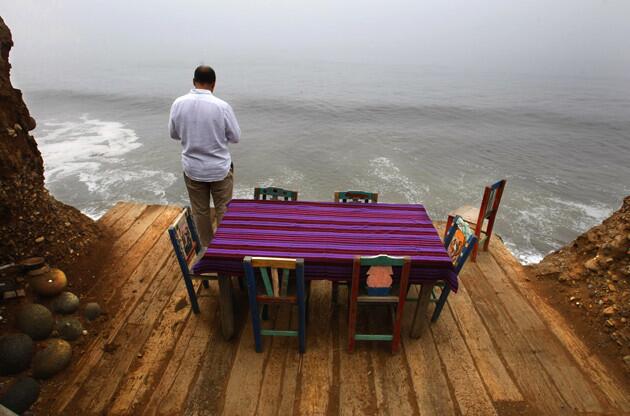
By Barbara Thornburg
Alejandro D’Acosta stands on the back deck of his house. “The sea is moving all the time,” he said. “The sun, the wind, all the natural elements are moving the point of view. When you stop to think of the project, we are floating on the Earth.” (Don Bartletti / Los Angeles Times)
Mexican architects Alejandro D’Acosta and Claudia Turrent continue their experiments in sustainable living with their recently completed earthen home built into a cliff in Ensenada.
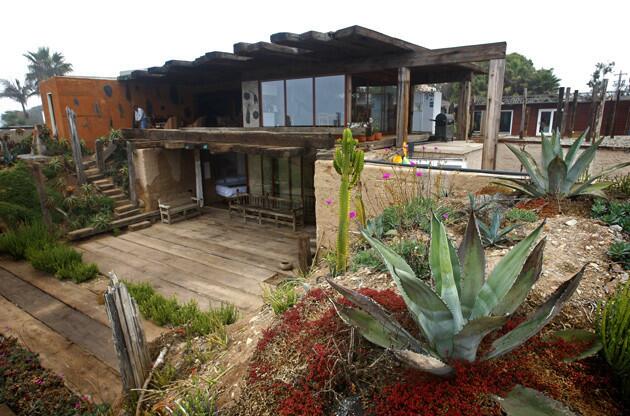
D’Acosta and Turrent began their two-year construction project by digging a foundation into the cliff, then constructing a perimeter of 3-foot-thick rammed-earth retaining walls. They called the inner structure of earthen tunnels an “hormiguero,” or ants’ nest. A concrete slab hearth supports the weight of the wood floor and roof, “like a huge column supporting a bridge,” D’Acosta said. The result is a 2,300-square-foot house with bohemian flair. (Don Bartletti / Los Angeles Times)
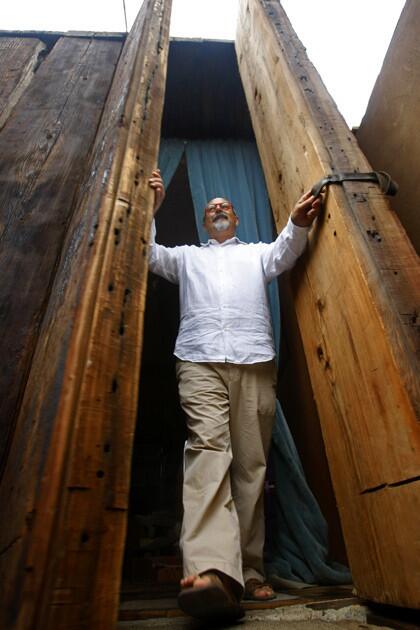
Another component of the home is recycled 100-year-old redwood planks from a bridge in Northern California. The couple bought 200 of the timbers, each 27 feet long and 1 ton, from a salvage yard in Rosarito Beach. They cut the plants and used them to fashion the front door, pictured here, as well as the roof and floor, front walkway, back deck and kitchen table. A steel pivot in the floor allows the 18-foot-tall, half-ton door to move with ease. (Don Bartletti / Los Angeles Times)
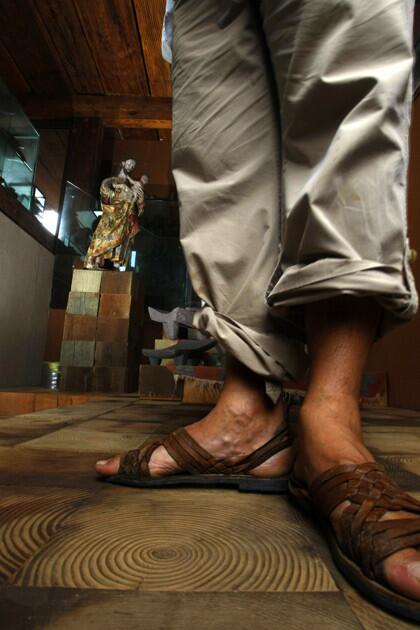
Turrent created an entry floor consisting of 10-inch-square end-cut timbers polished to highlight the wood grain. (Don Bartletti / Los Angeles Times)
Advertisement
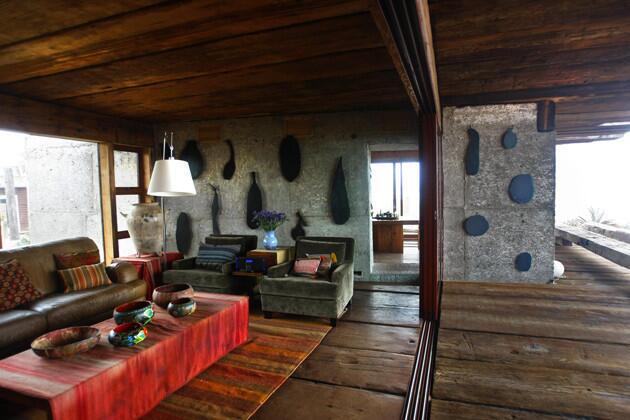
The public areas of the house are on the upper floor. Custom 20-foot telescoping glass doors slide away, so ocean breezes can cool the home. The double-insulated, energy-efficient glass reflects warmth on hot days. (Don Bartletti / Los Angeles Times)
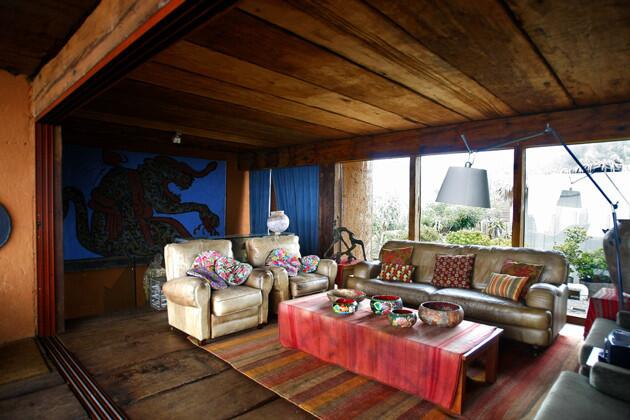
Three smaller windows behind the sofa can be opened to cool the house when the sliding doors are closed. The leather sofa and chairs are from Los Globos, an area of secondhand stores in Ensenada. “We paid $38 each for the chairs,” Turrent said. “They are the most comfortable chairs I’ve ever sat in.” (Don Bartletti / Los Angeles Times)
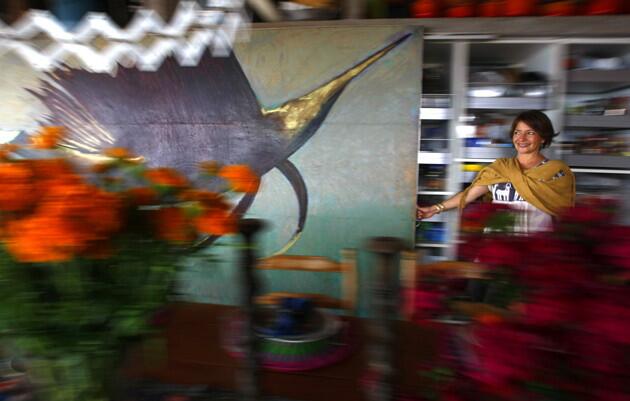
Turrent slides a pantry door painted with a sailfish. The door, 13 feet wide by 7 feet high, is recycled from an old architectural project. “We live by the sea,” said D’Acosta, who painted the mural. “We thought a big fish swimming in the kitchen would be nice.” (Don Bartletti / Los Angeles Times)
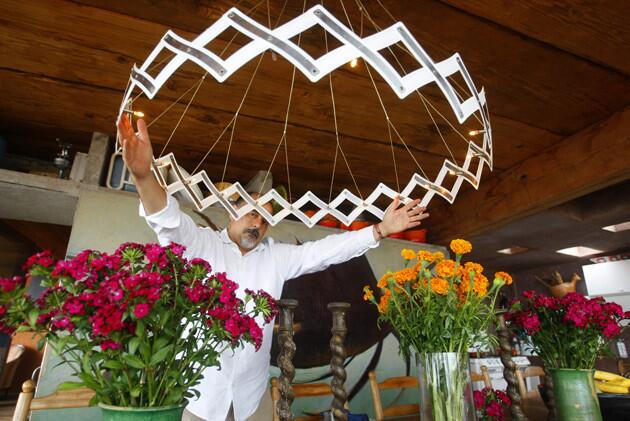
D’Acosta shows off an expandable light fixture that the couple bought on a trip to Berlin. It’s one of the few new pieces they bought for the house. (Don Bartletti / Los Angeles Times)
Advertisement
![Turrent fashioned the 6-by-12-foot dining table that sits 22 people. "It is held together with butterfly joints. There are no nails," she said. "The table weighs in at around 500 kilos [about 1,100 pounds] and takes five men to move."](https://ca-times.brightspotcdn.com/dims4/default/686e480/2147483647/strip/true/crop/630x421+0+0/resize/630x421!/quality/75/?url=https%3A%2F%2Fcalifornia-times-brightspot.s3.amazonaws.com%2Fad%2F67%2Fdc82b56a14e5b22e13cf106b714b%2Fla-hm-seaside-cliff-eco-house-photos-009)
Turrent fashioned the 6-by-12-foot dining table that sits 22 people. “It is held together with butterfly joints. There are no nails,” she said. “The table weighs in at around 500 kilos [about 1,100 pounds] and takes five men to move.” (Don Bartletti / Los Angeles Times)
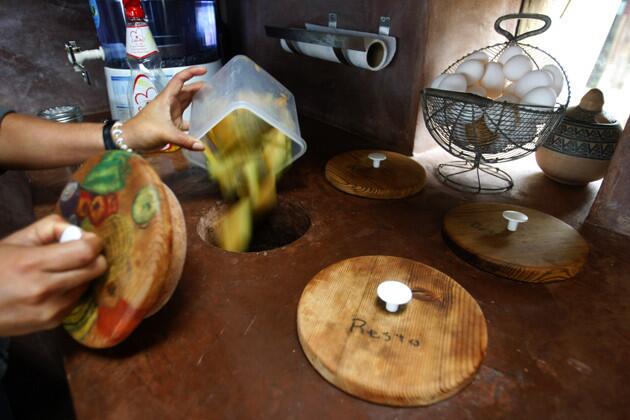
Four bins for recycling and compost are located under the counter. “We always keep our garbage and recycle as much as we can,” D’Acosta said. “The plastic we use for insulation, the aluminum to raise money for our daughter’s school and the compost for our vegetable garden.” (Don Bartletti / Los Angeles Times)
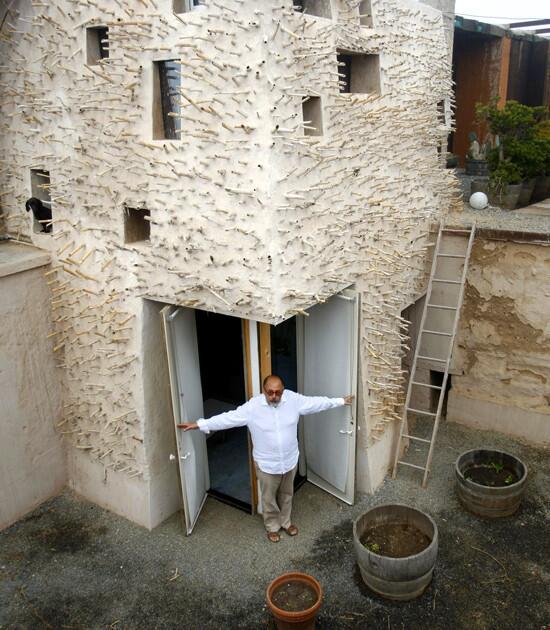
D’Acosta stands at a doorway below the kitchen. The experimental walls are composed of carrizo (reeds) mixed with dirt, lime and juice from nopal cactuses. “The carrizo helps the wall to breathe as well as hold it together,” the architect said. “Most of our work imitates the human body. It acts like the hair on your arm. It helps keep you cool as well as keeps you warm.” In the wine barrels outside, the couple raise lettuces, carrots, tomatoes, chilies and other vegetables. (Don Bartletti / Los Angeles Times)
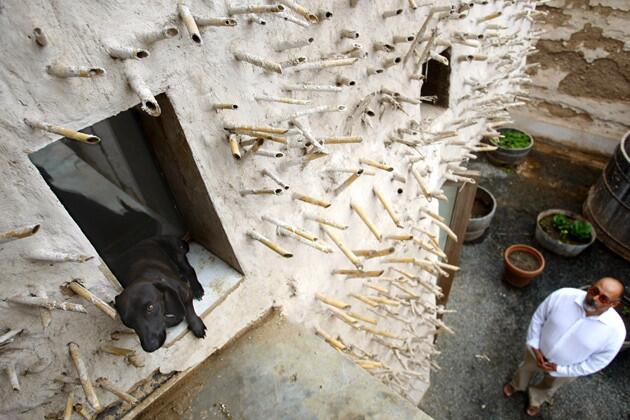
The couple’s dog, Cla Cla, pops her head through a kitchen window. (Don Bartletti / Los Angeles Times)
Advertisement
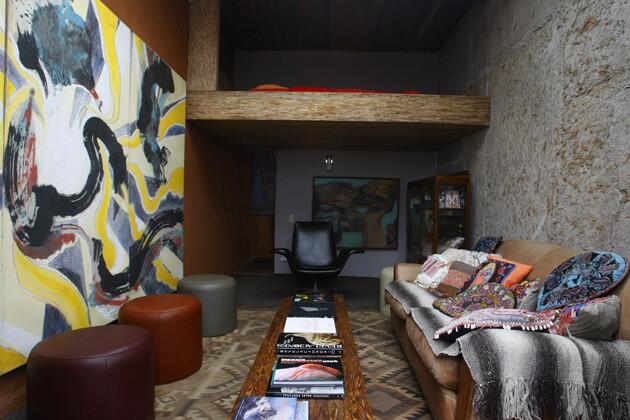
The small sitting room downstairs serves as a sleeping loft for overnight guests and has recently become daughter Fran’s bedroom. The rammed-earth walls are labor intensive; dirt must be compressed with sand, gravel and clay into a frame. The couple experimented with composition and settled on a mix -- “caca de caballo,” a.k.a. horse dung. “When they brought the caca de caballo, it smelled a lot, but as soon as it dried, the smell went away,” Turrent said. The walls were then sealed. (Don Bartletti / Los Angeles Times)
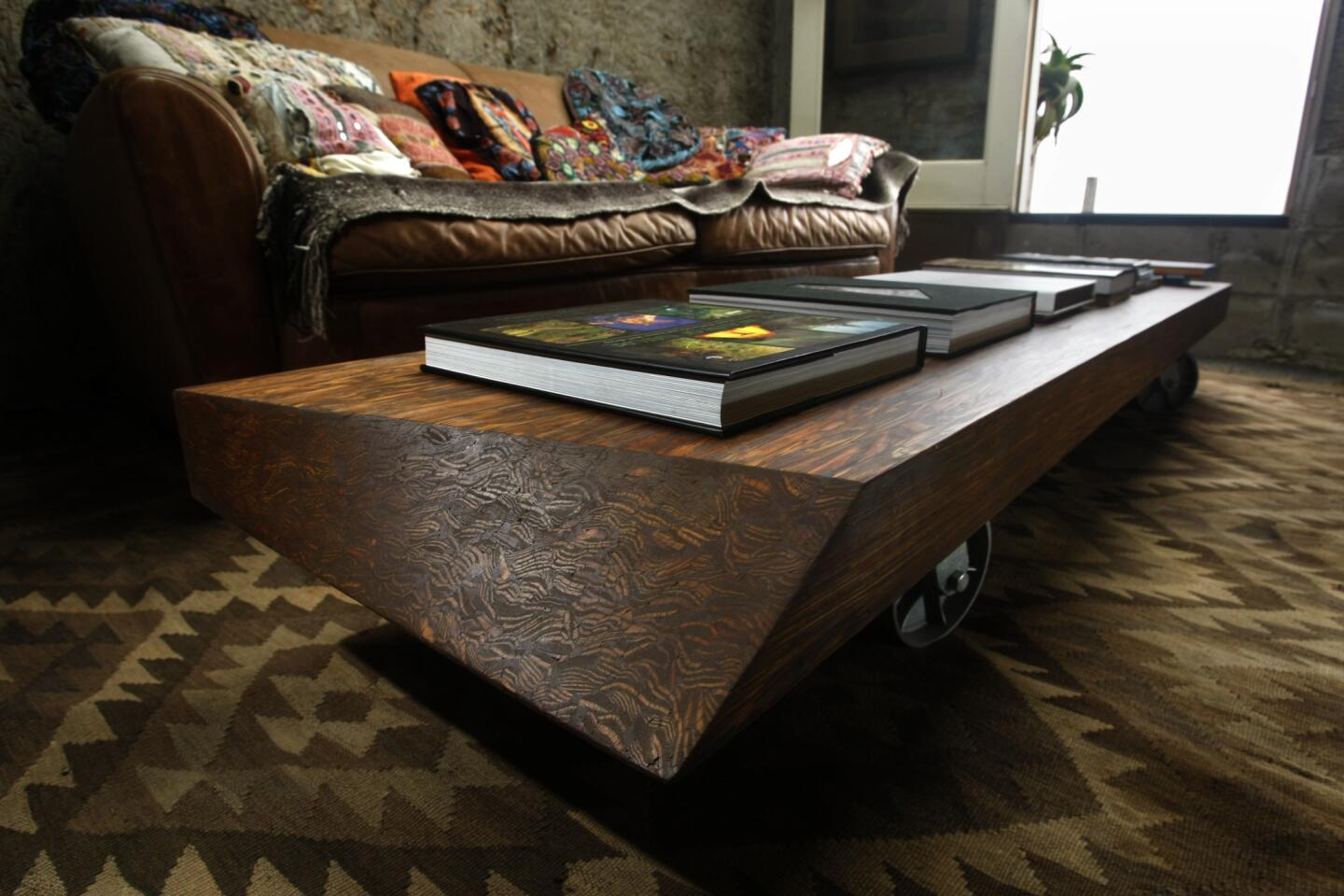
Turrent designed the coffee table, which is made of a pine beam from a warehouse in Los Angeles. “By twisting the geometry of the piece, you can see it’s different textures,” she said. (Don Bartletti / Los Angeles Times)
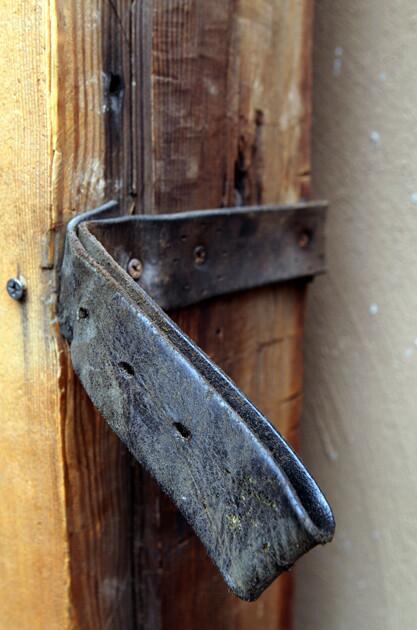
D’Acosta used an old leather belt as a handle for the front door. For more on the couple’s work, check out the website for their business, El Taller de Arquitectura Contexual.
Full article: Rammed-earth house in Ensenada
More profiles: Homes of the Times (Don Bartletti / Los Angeles Times)



